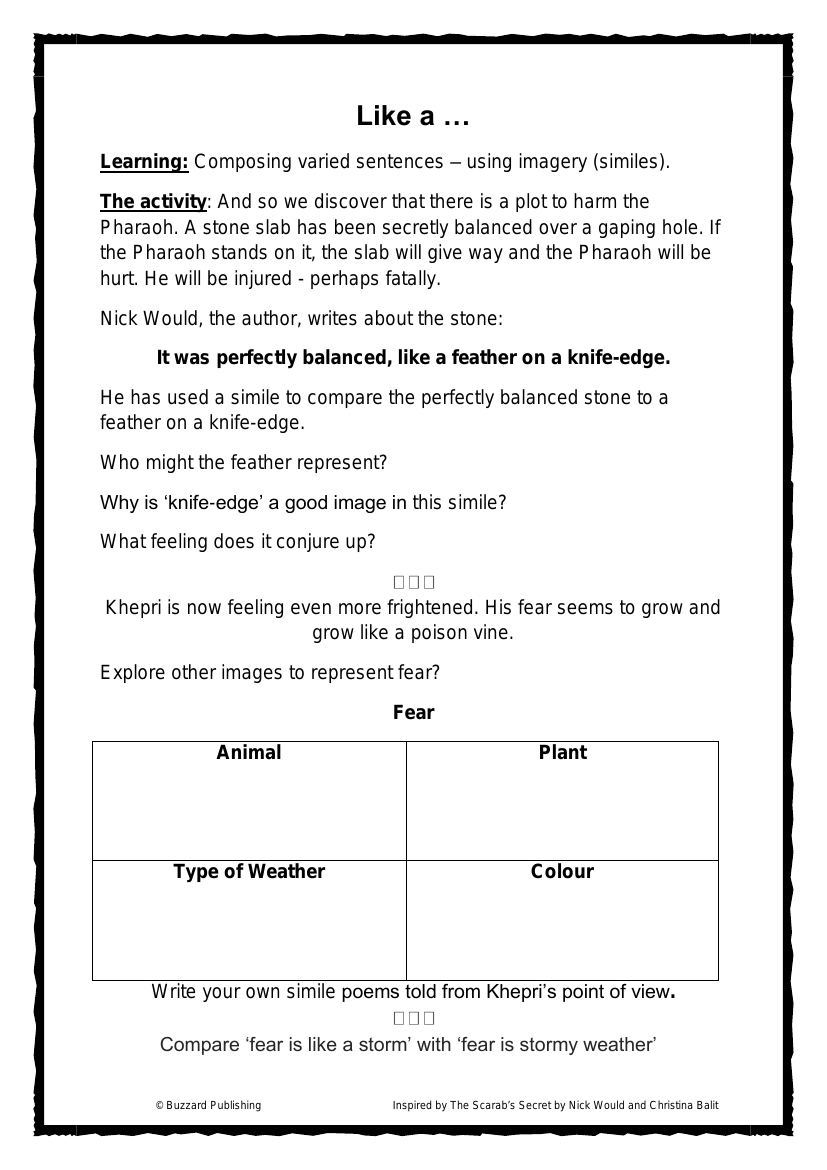Inspired by: Scarabs Secret - Week 4

English Resource Description
Inspired by Nick Would's captivating narrative in "The Scarab's Secret," students are encouraged to explore the art of composing varied sentences through the use of similes. The lesson focuses on the pivotal moment when a devious plot to harm the Pharaoh is uncovered—a stone slab precariously perched over a hole, threatening to collapse under his weight. The author's choice of simile likens the slab's delicate balance to a feather on a knife-edge, evoking a sense of precariousness and danger. Students are prompted to consider the symbolism of the feather and the potent imagery of the 'knife-edge.' They delve into the emotions stirred by such a comparison and are then tasked with crafting their own similes to express the growing fear experienced by the character Khepri. They are encouraged to draw on various elements such as animals, plants, types of weather, and colours to create vivid imagery of fear from Khepri's perspective, exploring the difference in impact between phrases like 'fear is like a storm' and 'fear is stormy weather.'
Building on their understanding of similes, students are also introduced to the secure use of sentences with a range of conjunctions, particularly focusing on 'if' and 'because.' They are presented with a scenario in which Khepri must act to save the Pharaoh from a fatal fall into an empty tomb. Students are challenged to devise solutions to this dire problem, considering the potential outcomes of Khepri's actions. They use 'if...then...' constructs to hypothesize the results of various interventions. This activity not only reinforces their understanding of cause and effect but also connects to the overarching theme of the book—how Khepri's courageous deed earned him honour. Students are encouraged to predict what Khepri might do next, using their imaginations to fill in the gaps and create their own resolutions to the story's conflict.
